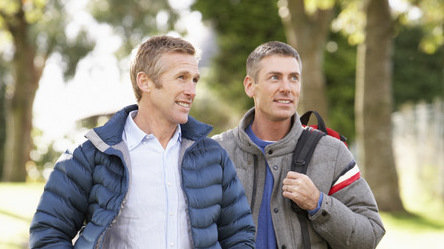 It’s often declared by opponents of same sex marriage that there are actually very few gay couples in Australia, and that many of these couples have no interest in marriage equality. Now the Australian Bureau of Statistics have allowed some facts and figures to be brought into the discussion with the release of a discussion paper that gives an overview from the 2011 national census.
It’s often declared by opponents of same sex marriage that there are actually very few gay couples in Australia, and that many of these couples have no interest in marriage equality. Now the Australian Bureau of Statistics have allowed some facts and figures to be brought into the discussion with the release of a discussion paper that gives an overview from the 2011 national census.
Officially there are 33,700 same sex couples in Australia, with 17,600 male couples and 16,100 female couples. This total comprises 1% of the total couples in Australia. In 1,300 of these couples one half of the couple described their partner as a ‘husband’ or ‘wife’, while the others identified as being in a de facto relationship.
There has been a significant increase in the number of same sex couples with each census since 1986 when records on the topic began. An same sex couple tends to be younger than you’re average straight couple, the median age for same sex couples is 40, 8 years younger than the median age for straight couples. We also have a bigger age gap with our partners, the average lesbian couple has an age gap of 4.8 years between each partner, for boys the gap is bigger is 6.5 years.
Increasingly more same sex couples have children, 6300 gay families are officially in Australia, and increase from 4,300 ten years earlier. Most same sex couples with children are female. Not surprisingly, we also tend to have less children than our opposite sex counterparts.
We’re twice as likely to be non-religious than our opposite sex neighbours, but around two out of every five couples acknowledge their religious beliefs, the most common being Catholic, Anglican and Buddhist.
We’re also almost twice as likely to have a degree or higher qualification, 42% of people in a same sex relationship will have a Bachelor degree or higher, while only 23% of straight couples will have a similar qualification.
People in a same sex relationship are more likely to be employed, and in line with our higher educational achievements we’re more likely to have a managerial or skilled role. Proving that some stereotypes have a basis in truth, we’re more likely to be working in retail, advertising, public relations, nursing, project managers and hairdressers, while men in opposite sex relationships will be truck drivers, electricians, metal fitters, carpenters and accountants. Women in same sex relationships will most likely be found working in the retail, nursing, the police and as secondary school teachers.
The majority of same sex couples are living in an apartment in Sydney’s inner city, but the place that has the greatest percentage of same sex couples in the Australian Capital Territory.
To read the full report from the Australian Bureau of Statistics click here.
OIP Staff, Image: Stock Image




